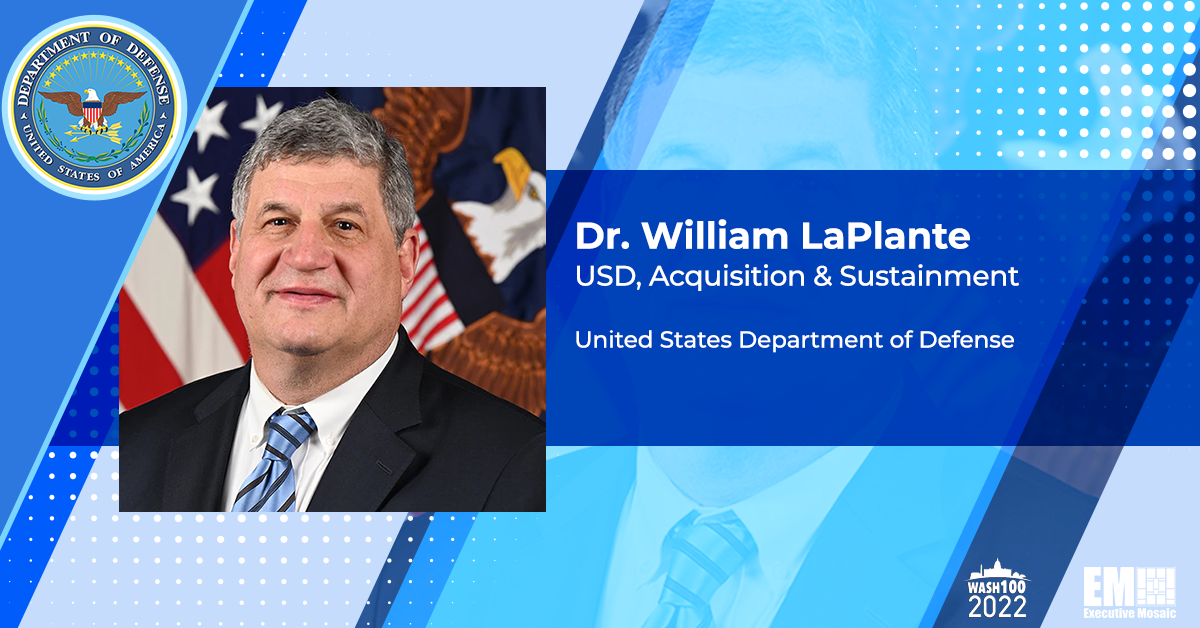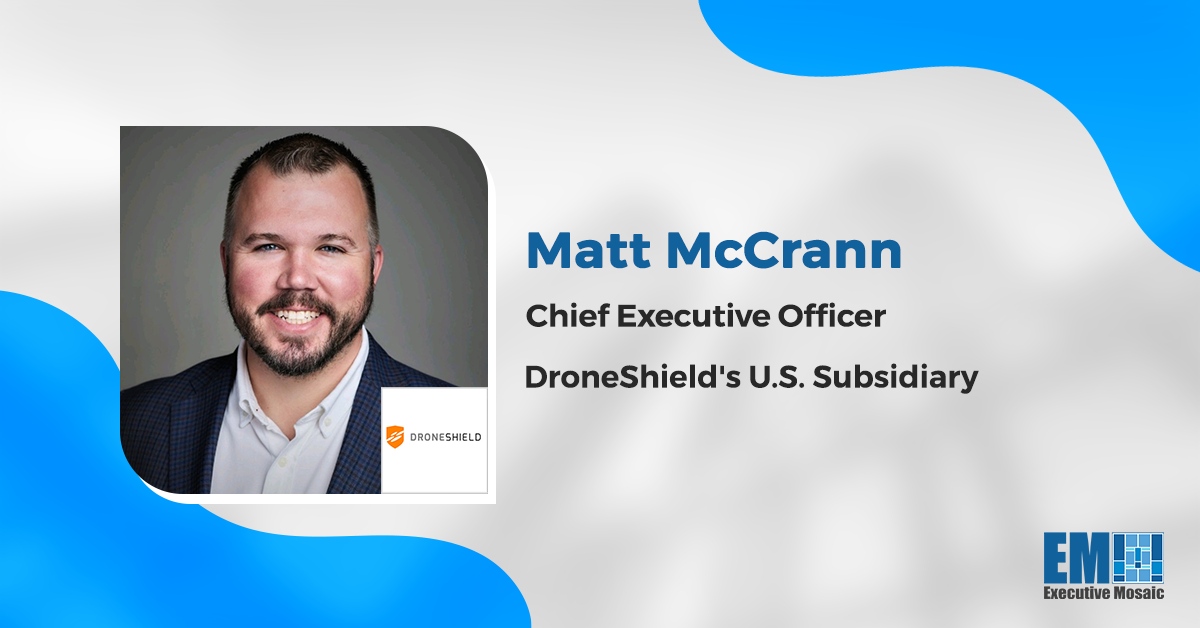Since the close of William LaPlante’s service as assistant secretary of the Air Force for Acquisition, Technology and Logistics in 2017, he has noticed a significant and much-needed increase in the amount of prototyping and experimentation activity within the Department of Defense.
Now, LaPlante, a 2022 Wash100 Award winner, has returned to the public sector as the DOD’s undersecretary of defense for acquisition and sustainment, and he asserts that this rise in prototyping can’t actually help our country’s warfighters unless we move those prototypes to production.
Two of Dr. LaPlante’s top three priorities focus on delivering capabilities to the warfighter and doing it sustainably and cost effectively, with the third priority centering around the defense industrial base. The importance of getting capability to the warfighter has been illustrated particularly by the unfolding of the Russia-Ukraine conflict which began earlier this year, he explained.
“Ukraine has been a microcosm, for me, of the bigger picture, which is: number one, it doesn’t matter if it’s not in production; number two, it doesn’t matter if you can’t train to it,” he said of technological and warfighter capabilities in a fireside chat during the Potomac Officers Club’s Defense Technology Summit: FY2023 Budget and Priorities.
The ongoing situation in Ukraine has also illuminated the challenges of predicting warfighter needs in a time frame that will be meaningful or impactful to the mission. Despite the hurdles associated with foreseeing requirements, Dr. LaPlante has identified a few areas as necessary for the future fight, regardless of how conflicts might unfold.
“It doesn’t take a rocket scientist or a warfighter expert to see the fact that integrated air missile defenses is where things are going both in Europe and Ukraine, and frankly, to the east in Taiwan. Regardless of what scenario you draw out, you realize that’s really needed,” stated LaPlante, who noted that he’s also seeing a need for counter-UAS and long-range precision fires in the future fight.
Production is one of the most important enablers in our country’s current defense missions, Dr. LaPlante suggested, and there are some critical areas in which we must speed production — or risk losing important ground to our competitors. One example of a high-priority capability area that has been stunted by lack of production is hypersonics, noted Dr. LaPlante.
“We’ve never been in production in hypersonics in this country ever. Hypersonics has been in the S&T world for 60 years, whereas the Russians and Chinese are in production. So I’m going to be tuning out when you talk about doing a test. When you go into production, I’m going to start paying attention,” shared the USD A&S.
In his remarks, Dr. LaPlante also suggested that we could see an unclassified version of the National Defense Strategy released as soon as this week, and possibly Friday. LaPlante said the strategy will focus on partnerships, and notably, campaigning.
LaPlante defined “campaign” as a series of related events striving toward a long-term objective, and he recalled a general sense of frustration in the U.S. of watching China move out on tech initiatives using a campaign-style approach.
“In the U.S. we were doing one-off events, and it was sort of checkers against chess,” he described of our nation’s previous lack of a unified, continuous strategy. “I think that the campaigning is now coming back into our government, and this is really a good thing that’s also in the NDS,” LaPlante revealed.

Learn more about defense priorities from a digital acquisition perspective during GovCon Wire’s 3rd Annual Defense Digital Acquisition and Innovation Forum on Nov. 2. Lt. Gen. David Bassett, director of the Defense Contract Management Agency, is scheduled to keynote this can’t-miss virtual event. Click here to register.







